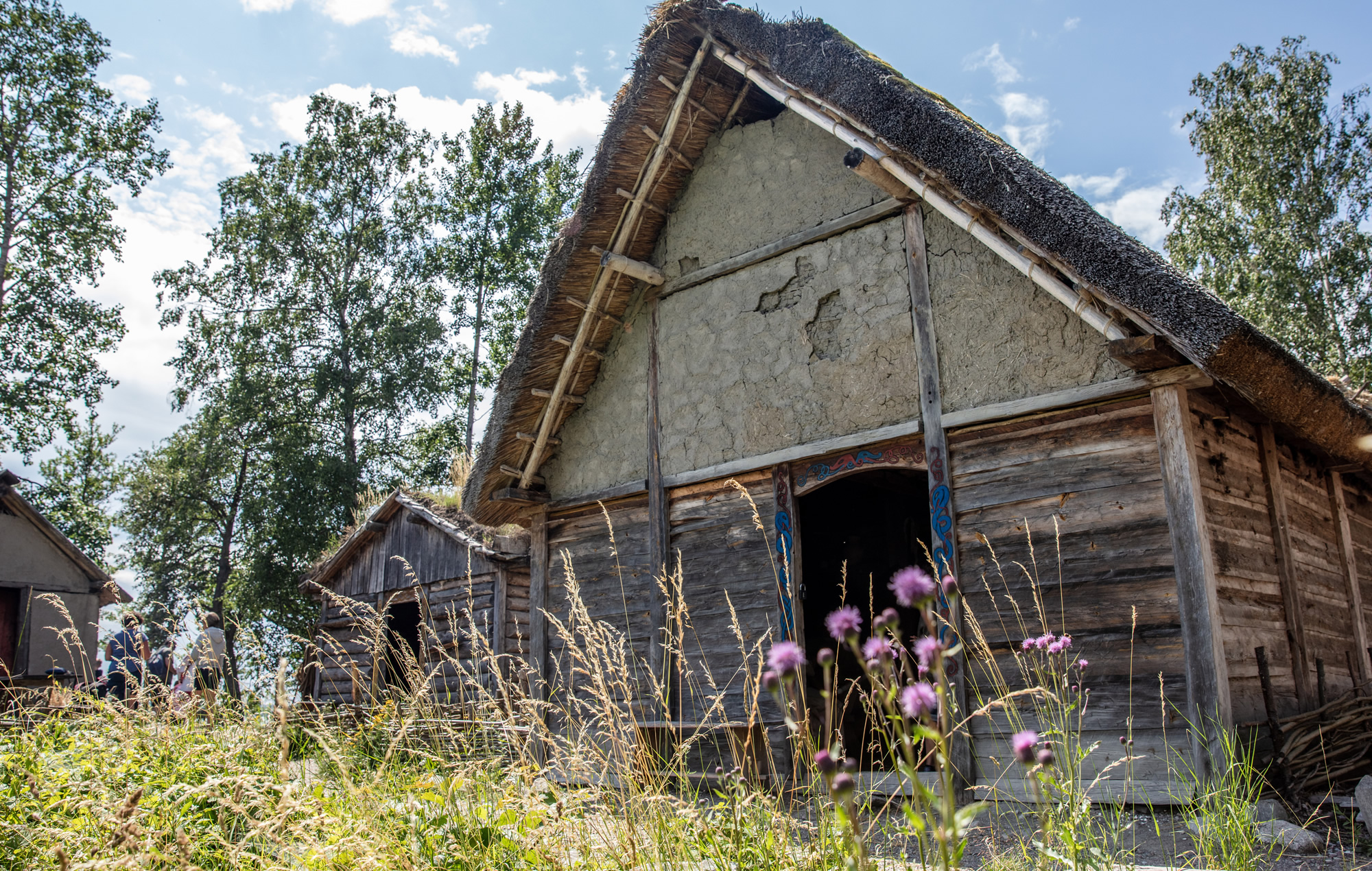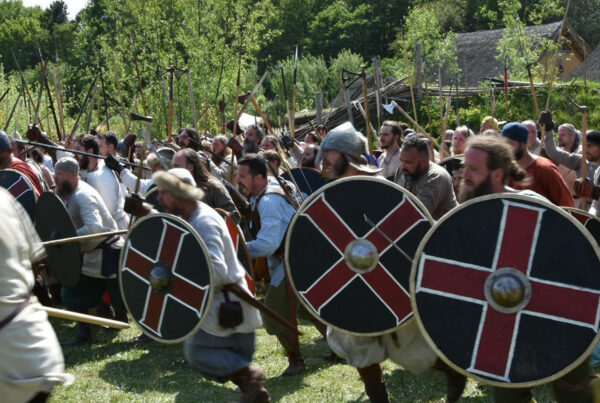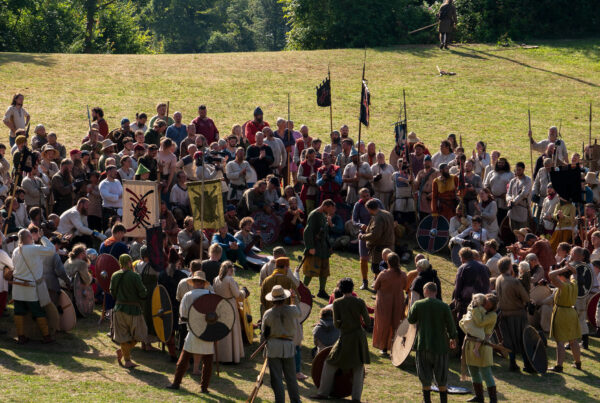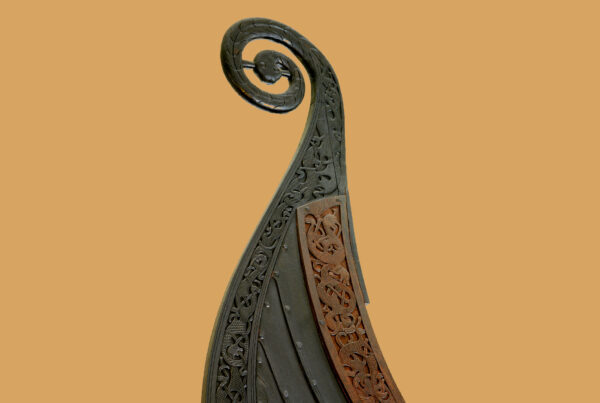Il gruppo di rievocazione storica Visundr ha scelto come focus per la sua area di studio e di azione quella che nell’era vichinga costituiva una delle città più dinamiche e interessanti dell’intero quadro nordico: Birka.
I motivi principali al centro di questa scelta avvenuta nel 2019, dopo circa 15 anni di esperienze rievocative, sono molteplici:
- Innanzitutto la molteplicita’ di tombe presenti sull’isola di Bjorko che offre una rosa davvero generosa di opzioni per diversificare i kit grazie alle molteplici varianti di oggetti e reperti.
- Il contesto storico della città, vero ponte tra est ed ovest, che offre uno scenario di profili rievocativi ineguagliabile: dal semplice contadino, passando dall’artigiano e dal commerciante per arrivare al soldato di guarnigione, non dimenticando il semplice avventuriero vichingo.
- La grande disponibilità di risorse letterarie e saggistiche prodotte negli anni a proposito della città in questione.
Ma a monte cosa ha reso necessaria questa scelta così precisa?
È stata innanzitutto la volontà di distinguersi da una scena rievocativa vichinga italiana ormai incancrenita da modi di intendere e vivere la rievocazione antiquati e superficiali, dove un kit storico è semplicemente un abito di carnevale e un evento solo un’occasione per grigliare e ubriacarsi. Ispirati dalla partecipazione ad eventi in Scandinavia dal 2006 in poi i membri del Visundr hanno sempre avuto un imprinting nordico sull’approccio alla rievocazione, prediligendo lo studio approfondito come base di ogni scelta e la semplicità come requisito basico nella concretizzazione dei kit.
I membri del Visundr rievocano infatti degli abitanti di un contesto urbano, persone che vivono la quotidianità delle loro professioni e che della praticità ed efficacia delle loro dotazioni fanno il vero vanto di ciò che intendono per “buona rievocazione”.
Sarebbe assurdo, come fatto da molti gruppi, proporre al pubblico rappresentazioni di vita di campo o di combattimento dove il 100% dei partecipanti sono nobili, agghindati con corredi di lusso prettamente concepiti per i funerali e soprattutto provenienti da tutte le varie fasi e le varie location toccate dagli scandinavi nell’arco dell’era vichinga.
Non di rado si vedono persone indossare insieme una spilla di York (Gran Bretagna), le scarpe di Haithabu (Germania) e un ciondolo islandese, tutti oggetti nati in contesti sociali e geografici profondamente diversi e separati da centinaia di anni l’uno dall’altro, buttati quindi nello stesso calderone solo appellandosi al gusto personale. Quale osceno modo di concepire quello che dovrebbe essere invece il rispetto per un periodo storico.
The historical reenactment group Visundr has chosen as its focus area of study and activity one of the most dynamic and fascinating towns of the entire Nordic world during the Viking Age: Birka.
The main reasons behind this choice made in 2019, after about 15 years of reenactment experience, are several:
-
First and foremost, the multitude of graves on the island of Björkö offers a generous range of options to diversify kits thanks to the many variants of objects and artifacts found.
-
The historical context of the town, a true bridge between East and West, provides an unparalleled reenactment scenario: from simple peasants to artisans and merchants, to garrison soldiers, not forgetting the everyday Viking adventurer.
-
The abundant availability of literary and scholarly resources produced over the years about the town in question.
But what made this very precise choice necessary in the first place?
It was primarily the desire to distinguish ourselves from an Italian Viking reenactment scene that had become entrenched in outdated and superficial ways of understanding and living reenactment—where a historical kit is simply a carnival costume and an event is just an occasion to grill and get drunk. Inspired by participation in events in Scandinavia from 2006 onward, the members of Visundr have always had a Nordic imprint in their approach to reenactment, favoring thorough study as the foundation of every choice and simplicity as a basic requirement in the realization of their kits.
Visundr members reenact inhabitants of an urban context—people who live their daily professions and who take real pride in the practicality and effectiveness of their equipment, which is what they mean by “good reenactment.”
It would be absurd, as many groups do, to present the public with portrayals of camp life or combat where 100% of participants are nobles, decked out in luxury gear designed strictly for funerals and, above all, originating from all the different phases and locations touched by the Scandinavians throughout the Viking Age.
It is not uncommon to see people wearing together a brooch from York (Great Britain), shoes from Haithabu (Germany), and an Icelandic pendant—all objects born in profoundly different social and geographic contexts separated by hundreds of years—thrown into the same pot simply based on personal taste. What a disgraceful way to conceive of what should instead be respect for a historical period.
